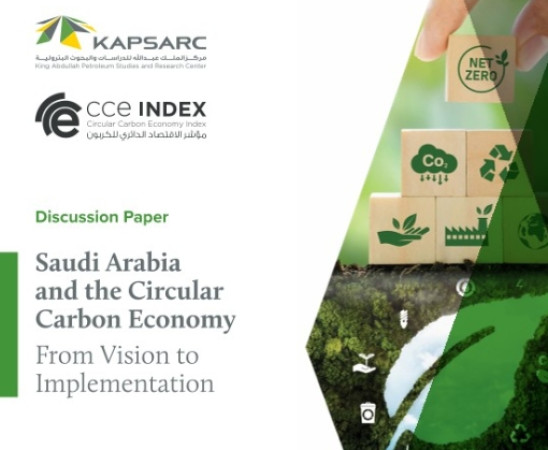
Follow India Renewable Energy News on WhatsApp for exclusive updates on clean energy news and insights
Saudi Arabia’s Circular Carbon Economy (CCE) Transition: Performance and Progress
Feb 19, 2025
Saudi Arabia's transition to a Circular Carbon Economy (CCE) is assessed in a discussion paper by the King Abdullah Petroleum Studies and Research Center (KAPSARC), which uses the 2023 Circular Carbon Economy Index (CCE Index) as its primary framework. The report highlights Saudi Arabia's performance within the global and regional context, emphasizing its strengths and areas for improvement in its journey toward a more sustainable, circular energy system.
Key Findings for Saudi Arabia
1. Global Ranking
Saudi Arabia ranks 20th globally on the CCE Index, surpassing both global and regional (MENA) averages. The country has shown strong performance in fuel switching and carbon capture, utilization, and storage (CCUS), which significantly boost its ranking. However, clean energy deployment lags behind, indicating an area where further efforts are needed.
2. Enabling Environment
The country ranks 13th globally in terms of enabling factors for CCE, aligning with the global average but trailing high-income nations. Saudi Arabia's business environment and system resilience are among its strongest enablers. However, finance and investment remain its weakest areas, although there have been improvements in recent years.
3. Oil Production Practices
Saudi Arabia excels in managing the carbon and flaring intensity of its oil production. This is attributed to the use of associated gas, the high resource quality of Arab Light crude, and effective flaring reduction practices, positioning the country favorably in terms of minimizing emissions from its oil sector.
4. Vision 2030 and Green Initiatives
Saudi Vision 2030 plays a crucial role in the country’s push for economic diversification and renewable energy development. The National Renewable Energy Program and energy efficiency initiatives are helping the kingdom make significant strides in clean energy.
Ambitious targets for renewable energy capacity and clean hydrogen production are central to these efforts. The Saudi Green Initiative (SGI), focusing on natural sinks and large-scale tree planting, is also a vital part of the transition. Additionally, Saudi Arabia is developing a regulated carbon crediting mechanism to support its environmental goals.
Key Takeaways from the CCE Index
- The CCE Index evaluates countries' performance and potential in adopting circular carbon practices across various technologies and processes, including the "Rs" (reduce, reuse, recycle, and remove).
- Saudi Arabia's performance on the CCE Index provides valuable insights for further policy development and refinement.
- While progress has been made, the report highlights the need for significant financial redirection to fully realize the potential of CCE and meet global climate targets under the Paris Agreement.
Conclusion
While Saudi Arabia has made notable strides in reducing carbon emissions and advancing towards a circular carbon economy, the country still faces challenges in accelerating clean energy deployment and scaling up financial investments in this transition. Continued progress will require stronger financial flows and enhanced international cooperation to ensure the kingdom meets its ambitious sustainability targets.